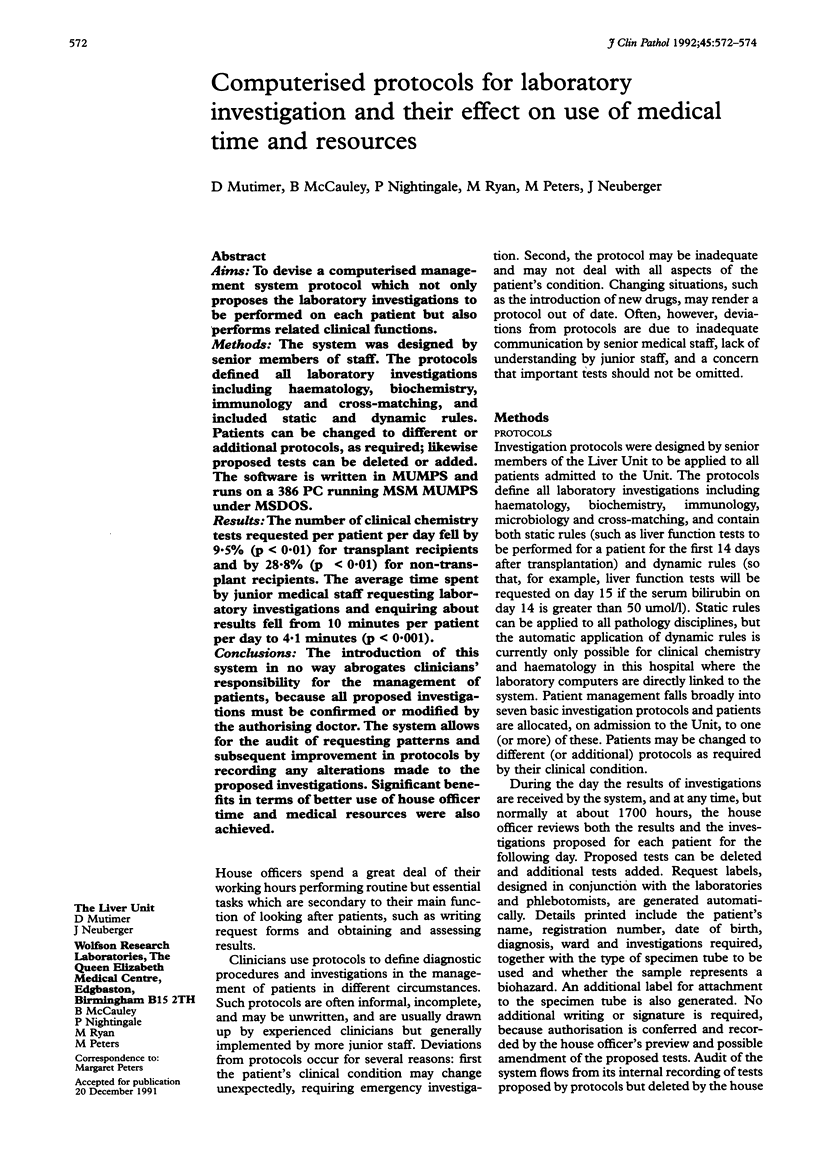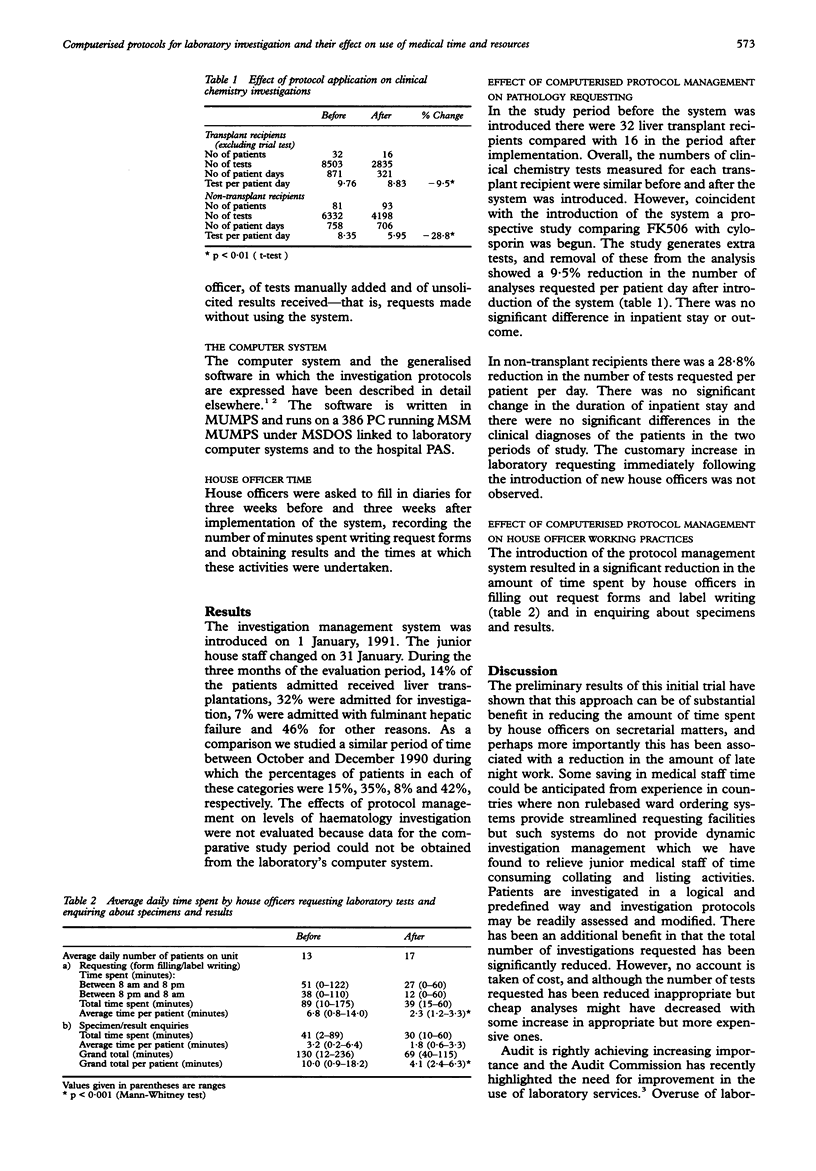Abstract
AIMS: To devise a computerised management system protocol which not only proposes the laboratory investigations to be performed on each patient but also performs related clinical functions. METHODS: The system was designed by senior members of staff. The protocols defined all laboratory investigations including haematology, biochemistry, immunology and cross-matching, and included static and dynamic rules. Patients can be changed to different or additional protocols, as required; likewise proposed tests can be deleted or added. The software is written in MUMPS and runs on a 386 PC running MSM MUMPS under MSDOS. RESULTS: The number of clinical chemistry tests requested per patient per day fell by 9.5% (p less than 0.01) for transplant recipients and by 28.8% (p less than 0.01) for non-transplant recipients. The average time spent by junior medical staff requesting laboratory investigations and enquiring about results fell from 10 minutes per patient per day to 4.1 minutes (p less than 0.001). CONCLUSIONS: The introduction of this system in no way abrogates clinicians' responsibility for the management of patients, because all proposed investigations must be confirmed or modified by the authorising doctor. The system allows for the audit of requesting patterns and subsequent improvement in protocols by recording any alterations made to the proposed investigations. Significant benefits in terms of better use of house officer time and medical resources were also achieved.
Full text
PDF


Selected References
These references are in PubMed. This may not be the complete list of references from this article.
- Fowkes F. G., Hall R., Jones J. H., Scanlon M. F., Elder G. H., Hobbs D. R., Jacobs A., Cavill I. A., Kay S. Trial of strategy for reducing the use of laboratory tests. Br Med J (Clin Res Ed) 1986 Mar 29;292(6524):883–885. doi: 10.1136/bmj.292.6524.883. [DOI] [PMC free article] [PubMed] [Google Scholar]
- Griner P. F. Use of laboratory tests in a teaching hospital: long-term trends: reductions in use and relative cost. Ann Intern Med. 1979 Feb;90(2):243–248. doi: 10.7326/0003-4819-90-2-243. [DOI] [PubMed] [Google Scholar]
- Grivell A. R., Forgie H. J., Fraser C. G., Berry M. N. Effect of feedback to clinical staff of information on clinical biochemistry requesting patterns. Clin Chem. 1981 Oct;27(10):1717–1720. [PubMed] [Google Scholar]
- Hardison J. E. Sounding boards. To be complete. N Engl J Med. 1979 Jan 25;300(4):193–194. doi: 10.1056/NEJM197901253000410. [DOI] [PubMed] [Google Scholar]
- Heath D. A. Medical audit in general medicine. J R Coll Physicians Lond. 1981 Jul;15(3):197–199. [PMC free article] [PubMed] [Google Scholar]
- Martin A. R., Wolf M. A., Thibodeau L. A., Dzau V., Braunwald E. A trial of two strategies to modify the test-ordering behavior of medical residents. N Engl J Med. 1980 Dec 4;303(23):1330–1336. doi: 10.1056/NEJM198012043032304. [DOI] [PubMed] [Google Scholar]
- Wong E. T., McCarron M. M., Shaw S. T., Jr Ordering of laboratory tests in a teaching hospital. Can it be improved? JAMA. 1983 Jun 10;249(22):3076–3080. [PubMed] [Google Scholar]
- Young D. W. An aid to reducing unnecessary investigations. Br Med J. 1980 Dec 13;281(6255):1610–1611. doi: 10.1136/bmj.281.6255.1610. [DOI] [PMC free article] [PubMed] [Google Scholar]


